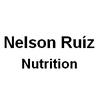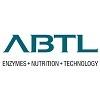Explore all the information on
Energy in poultry diets
While protein, vitamins and minerals are referred to as nutrients, energy -the 4th and most costly part of the diet- is not a nutrient but the property of energy yielding nutrients. Dietary nutrients that yield energy are protein, fat and carbohydrates. Dietary energy level is the main factor influencing feed intake, as birds will, under normal circumstances, eat to satisfy their energy needs. Therefore the dietary nutrients, protein vitamins and minerals should vary in relation to the dietary energy content of the diet, if they are not to become deficient, with low feed intakes, or overconsumed, with low energy diets. While there are a number of factors, such as level of protein, balance of essential amino acids and perhaps level of some of the other dietary nutrients, that can influence the cost of a diet, the level of dietary energy is usually the main factor influencing diet cost.
Introduction There is a mandatory requirement for crude protein (CP) in broiler chicken diets ranging from 180 to 230 g/kg. When dietary energy density is not limiting, the quality and quantity of dietary CP dictates birds’ growth performance. The digestibilities of protein and amino acids are pivotal to the quality of the inclusion of any feedstuff in diets for chicken-meat production. However, a series of studies [1–3] have demonstrated that feed conversion...
Comments : 1
Recommendations: 1
1. Introduction Modern broilers show increasing growth rates, improved feed conversions, and increased breast meat size and yield, which play a pivotal role in the economics and sustainability of poultry production. Indeed, across the years, broilers have become leaner [1], and the industry aims to increase breast meat production due to its higher market price. To achieve this aim, operation professionals need to be able to determine, ahead of time, what the final results...
Comments : 0
Recommendations: 0
Dr. John Thomson, U.S. Sales Manager for Feed Additives at AlzChem, speaks about the impoortance of Creatine as an essential molecule in energy metabolism in the body of animals
...
Comments : 0
Recommendations: 2
Introduction In poultry, the net energy (NE) is the sum of the energy retained in the body and lost through heat production. Under its classic definition, the prediction of NE requires precise and accurate determinations of fasting heat production (FHP) and heat increment, which accounts for the energy production due to feeding, digestion, and the associated physical activity (Maharjan et al., 2021c). Then, the NE is indirectly obtained by sequential differences from the gross...
Comments : 0
Recommendations: 1
Introduction The poultry industry aims to increase the breast weight of broilers due to its higher market price. However, the breast size is associated with meat conditions such as woody breast (Maharjan et al., 2021a), the body protein turnover (Maharjan et al., 2020a, Maharjan et al., 2021b) and lean mass weight (Martinez et al., 2020a), and changes in the partitioning of the dietary energy (Martinez et al., 2019a). These relationships can be influenced to favor production and...
Comments : 0
Recommendations: 0
Introduction The poultry industry has experienced unprecedented growth in the past 70 years due to improved genetics, nutrition, housing, water quality and veterinary care driven by post-WWII consumer demands (Havenstein, et al., 2003). Modern-day poultry efficiently convert feed to meat and eggs, but genetic selection for improved performance may have inadvertently selected for a negative correlative response to other traits such as immune function (Cheema et al., 2003). The reader...
Comments : 0
Recommendations: 2
Nelson Ruiz (Nelson Ruiz Nutrition) highlights the relevance of quality parameters in times of scarcity or supply chain issues, in this interview during IPPE 2023 in Atlanta, USA....
Comments : 0
Recommendations: 0
Diego Martínez (University of Arkansas) discusses the different models to measure and predict nutrition's impact on performance, in this interview during IPPE 2023 in Atlanta, USA....
Comments : 0
Recommendations: 0
The heat production (HP) of broilers has been shown to increase through the years associated with higher breast meat yield, supporting the use of an energy system that better accounts for HP differences caused by changes in genetics, body composition (BC), nutrition, and environmental temperature. This study aimed to determine the influence of BC on fasting HP (FHP) and the sensitivity of models based on metabolic body weight (MBW) alone or including BC to determine the maintenance net...
Comments : 0
Recommendations: 0
Can creatine supports muscle growth, the immune system or energy efficiency? In this interview, Dr. John Thomson from Alzchem responds to this question...
Comments : 0
Recommendations: 3
XylaOpt™ is an intrinsically thermostable xylanase enzyme with optimal pH activity profile that targets the arabinoxylan fraction in dietary fibre, resulting in improved digestibility & increased performance....
Comments : 2
Recommendations: 3
I. INTRODUCTION Both glucose and amino acids are essential for muscle protein deposition and feed conversion efficiency and total tract nitrogen retention was reported to be influenced by protein and starch digestion in broiler chickens (Liu et al., 2013). Liu and Selle (2015) found that 76% of the variation in the feed-conversion ratio (FCR) could be attributed to starch and protein digestion rates in sorghum-based diets. Quadratic relationships between proximal jejunal...
Comments : 1
Recommendations: 1
Introduction Under normal commercial conditions, poultry tend to eat to satisfy their energy needs, thus dietary energy level drives feed intake, which in turn, is the basis of diet formulation. Feed is the major cost for poultry production and accurate diet formulation is therefore of paramount importance to the profitability of poultry enterprises. The metabolisable energy (ME)...
Comments : 1
Recommendations: 0
It has been proposed that the metabolic energy requirements of free-ranging hens are up to 15% higher compared to caged hens due to the increased metabolic activity required for locomotion and thermoregulation (GfE 1999; Tiller 2001; Aerni et al. 2005). The aim of the study was to investigate the impact of various feed strategies on laying performance and egg quality of free-range laying hens. A total of 9,375 hens, placed amongst 5 flocks of 40,000 hens each were selected according to their...
Comments : 0
Recommendations: 0
...
Comments : 0
Recommendations: 0
...
Comments : 0
Recommendations: 0
Introduction The gradual increase in the world's poultry production concomitantly increases the need for ingredients to supply protein for diets. Cereals constitute about 60 - 70% of diets to meet the energy requirements of poultry, whereas oilseeds contribute to cover the dietary protein requirements of birds (Senkoylu & Dale, 1999). Soybean meal (SBM) is the main protein source in poultry rations given its high nutritional value. Most of the European and Asian...
Comments : 9
Recommendations: 2
BE THE MASTER OF ENERGY. Dr. Pierre-André Geraert, Adisseo's director of Scientific Marketing, points out the benefits of NESTOR, a service to obtain nutritional recommendations for poultry & swine in net energy, digestible amino acids, and minerals to adapt them to specific conditions ...
Comments : 1
Recommendations: 6
Background & Objectives Wheat has known as an alternative source of energy in poultry diets because of a shortage of corn supply and the increase in corn price. However, its utilization efficiency is lower than that of corn because it contains more anti-nutritive factors, especially non-starch polysaccharides (NSP). Some studies suggest that the addition of xylanase in wheat-based diets can reduce the intestinal viscosity by partially hydrolyzing the NSP of wheat, resulting...
Comments : 0
Recommendations: 0














.jpg&w=3840&q=75)



.jpg&w=3840&q=75)


.jpg&w=3840&q=75)












